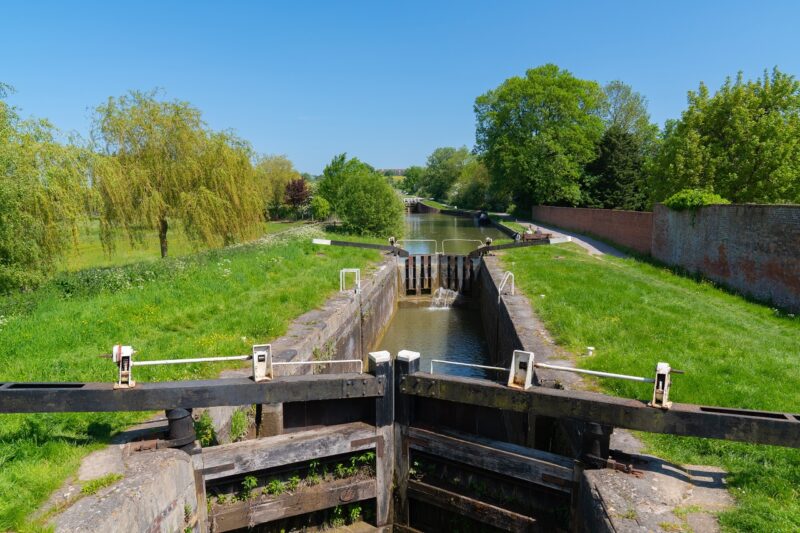Published: 07/07/25 By: Mike Bekin
With over 2,000 miles of rivers and canals flowing through England and Wales alone, we are a country which was built on its waterways and for many hundreds of years, that also included timber lock gates. Used to control water levels and make sure boats can move around our green and pleasant land, these are as much a part of our waterways as swans and narrowboats.
Aside from their role in the landscape, lock gates are also sturdy and durable, bringing functionality to rivers and canals. For that reason, it is essential that the gates we have are well-maintained, which is where we come in. Whether you are working on a council-led renovation project or installing a lock gate on your private property, we are here to help you choose the right timber species for long-lasting lock gates.
What You Need From Your Timber Species
When building or renovating lock gates, the timber species you choose will affect how long your gate lasts and how well it functions. A type of timber which is up to the job should be able to stand being submerged in water without rotting for many years, ensuring that it does not disintegrate after just a short while in the river.
To make understanding what you need from your lock gate timber species simple, we have put together a quick checklist:
- Use Class 5, which means it can be submerged in water.
- Natural resistance to waterborne borers and other insects.
- Strong enough to withstand the impact of boats.
- Strong enough to withstand high water pressure.
On the surface, that might sound like a pretty tough list! Luckily, there are a few timber species out there which fit the bill.
Ekki Timber for Lock Gates
If you are looking for strength and resilience, Ekki is a great choice for your lock gates. This tropical hardwood is incredibly dense and hard-wearing, making it a go-to choice for marine and freshwater construction projects around the world.
Ekki is naturally durable in wet conditions, ticking the all-important Use Class 5 box. It is also resistant to fungi, insects and borers, which is ideal when your gate is going to spend a lot of its life submerged or waterlogged. In terms of toughness, Ekki is hard to beat – it is strong enough to take knocks from boats and deal with high water pressure without so much as a flinch.
While it can be a bit more challenging to work with because of its density (your tools will know they have been busy!), the pay-off is a timber which lasts for decades with minimal maintenance.
Oak Timber for Lock Gates
A true British classic, Oak has been used in lock gates for generations – and for good reason too! Native to the UK, Oak is strong, relatively easy to work with, and brings a traditional aesthetic which sits beautifully within our heritage landscapes.
However, it is important to note that Oak is not naturally a Use Class 5. It also does not quite have the same resistance to marine borers as some tropical hardwoods such Ekki or Greenheart, but in freshwater settings, Oak is more than up to the task.
Working on a conservation project? Using Oak for your lock gates is the traditional choice, as it preserves the look and feel of historical sites without compromising durability.
Greenheart Timber for Lock Gates
As an honourable mention, we quickly wanted to touch on Greenheart. Like Ekki, this is a Use Class 5 timber with natural resistance to decay, waterlogging and insect attacks. It also offers high strength and excellent dimensional stability, which means it will not warp or swell dramatically over time.
Order Your Lock Gate Timber
Each of the timber species mentioned here is a fantastic choice for British lock gates, and you cannot really go wrong whichever option you choose! If you are ready to order, simply let us know that your timber is for lock gates, and we will make sure the boards you get are ready to go in the water. Reach out today to start your timber lock gate project.
Tags: hydraulic engineering, lock gates, Timber
Categories: Insights
